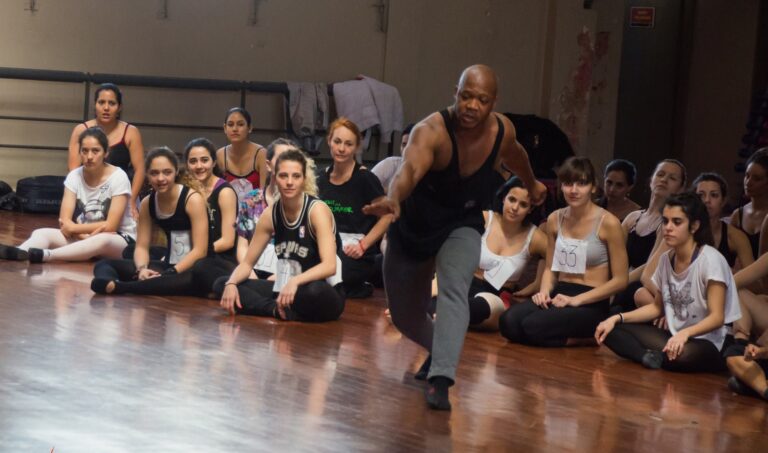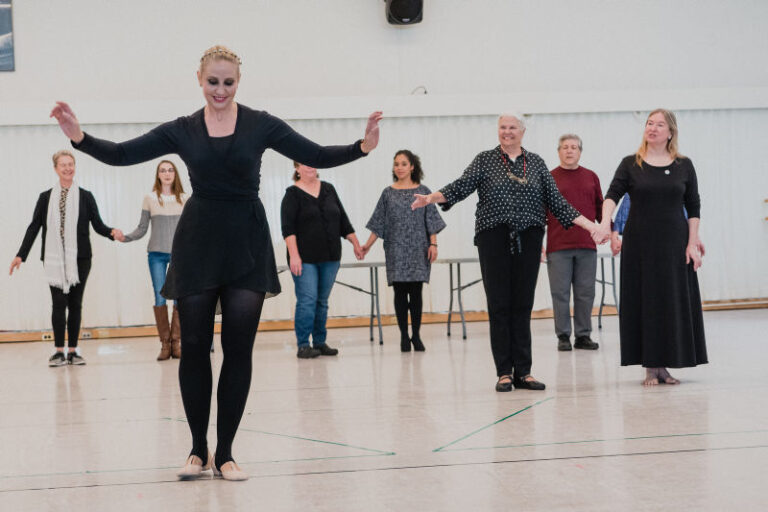La Rocco in front of one of her poems
Claudia La Rocco had only a cursory knowledge of dance when her editor at The Associated Press first asked her to review a performance. “I told her, ‘Give me a few months, and I’ll study and take classes, and then I could try it,’” she says. “She said, ‘No, no, Baryshnikov is dancing on Thursday, and that’s what you will review.’” That was more than a decade ago. Now La Rocco—who ended up taking beginner classes, watching countless rehearsals and reviewing dance for The New York Times—is curating a dance project.
PLATFORM 2015: Dancers, Buildings and People in the Streets is named for an essay by famous dance critic Edwin Denby. For the project, La Rocco chose six unexpected pairings from a mix of artists. For example, she teamed up Sterling Hyltin (New York City Ballet principal) with Jodi Melnick, a performer and choreographer working in a postmodern, experimental style. La Rocco emphasizes that she’s not necessarily looking for a finished product from each pair. “We wanted it to be more about an exploration—an encounter, a conversation,” she says. From February 11 to March 28 at Danspace Project in New York City, each duo will show what they’ve created.
PLATFORM 2015’s selection process “We wanted to get artists who had intelligence and grounding in distinct worlds but who, at the same time, were open to having conversations. Sterling [Hyltin] I know as a dancer, and I kept hearing that she was really curious and bright and open. She’s paired with Jodi [Melnick], who works as a dancer and choreographer in a way that’s pretty intertwined. I’m not expecting Jodi to make a duet for the two of them. If neither of them ends up dancing, or if Sterling makes a solo on Jodi, or if they end up finger painting—it should be very open.”
Her challenges as a dance critic “This idea that you have to be focused for that hour or 45 minutes or two hours—if you fall out [of concentration], you can’t go back and just read those two pages your mind wandered from. But to try and hone a certain type of focus and presence has been both a challenge and a gift.”
On writing negative reviews “If you don’t feel like you can speak honestly—if you begin to censor yourself—then you’re really not serving the readers and the art. There’s the way to be just nasty and dismissive, and then there’s the way to be respectful. You can take something seriously and say, ‘But for me, from my perspective, this didn’t work.’ I just try not to be rude. Don’t use a sledgehammer when a smaller tool would work just as well.” DT
Education: BA in English, Bowdoin College
Writing: dance critic for The New York Times, 2005–2012; her writing also appears in Artforum magazine
Teaching: art criticism and writing at the School of Visual Arts MFA program; guest lecturer at Arizona State University and Stanford University
Photo by José Carlos Teixeira, courtesy of La Rocco




